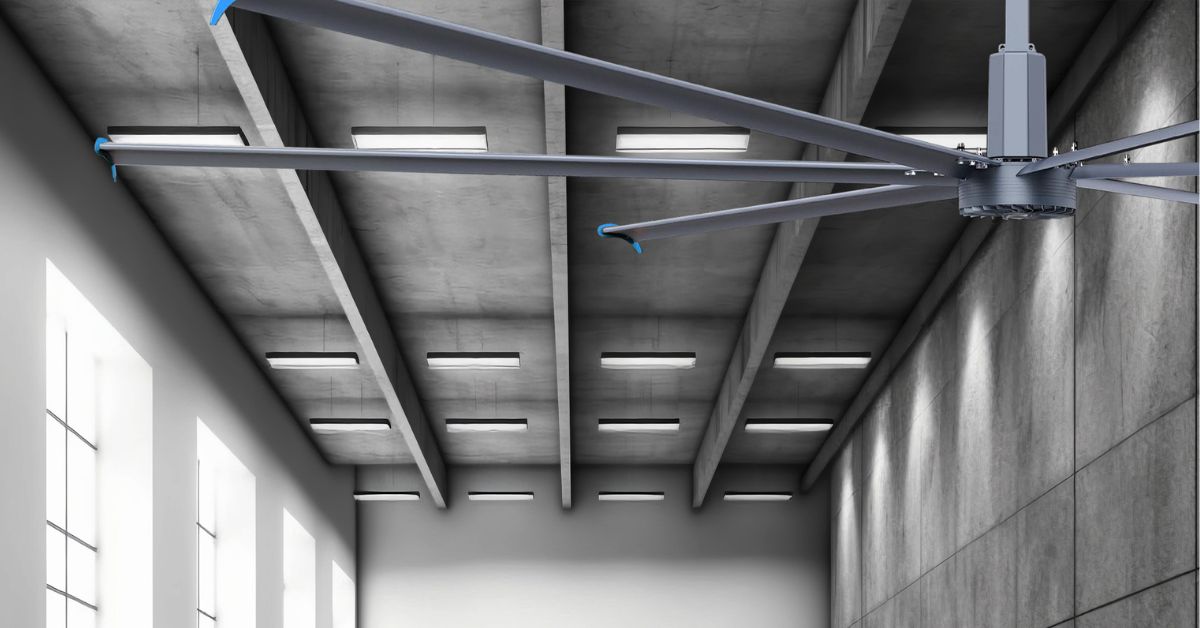The Complete Guide to Choosing the Right Commercial Ceiling Fan
When it comes to enhancing the comfort, air circulation, and energy efficiency of large spaces, the Commercial Ceiling Fan stands out as a practical and cost-effective solution. Whether you’re outfitting a warehouse, retail outlet, gym, or office, the right ceiling fan can make a significant difference in both utility and ambiance. Designed to cover vast areas with powerful airflow, commercial ceiling fans are more than just oversized versions of household fans — they are purpose-built machines tailored for industrial and commercial needs.
Why Choose a Commercial Ceiling Fan?
Unlike traditional residential fans, commercial ceiling fans are engineered for performance and durability. These fans are built with larger blade spans, more robust motors, and specialized materials to withstand continuous use in busy environments. Here are a few compelling reasons to consider installing one:
1. Efficient Air Circulation
In large spaces, proper air movement can be a challenge. A commercial ceiling fan provides consistent airflow throughout the room, eliminating hot or cold spots and promoting balanced temperatures. This is particularly important in spaces like warehouses or fitness centers, where uneven airflow can impact comfort and productivity.
2. Energy Savings
One of the primary advantages of a commercial ceiling fan is its ability to reduce energy costs. By improving circulation, ceiling fans allow HVAC systems to work more efficiently. In summer, the breeze effect from fans makes a space feel cooler, letting you raise the thermostat without sacrificing comfort. In winter, fans can be reversed to push warm air down from the ceiling, reducing heating expenses.
3. Versatility in Application
Commercial fans are not limited to industrial settings. They’re ideal for commercial kitchens, auditoriums, restaurants, schools, shopping centers, and more. Their sleek and often minimalist designs allow them to blend seamlessly with modern or utilitarian interiors alike.
Key Features to Look for in a Commercial Ceiling Fan
Choosing the right ceiling fan for your commercial space involves more than just picking the biggest model. Here are some essential features and considerations to help guide your decision:
Blade Size and Number
Larger blade spans — typically between 60 to 120 inches — allow the fan to move more air with fewer revolutions, creating efficient and silent airflow. Depending on your ceiling height and the square footage of your space, you’ll want to choose a fan with an appropriate blade length.
Motor Quality
A powerful, high-torque motor is essential for long-term performance. Look for fans with direct-drive motors, which are quieter and require less maintenance than belt-driven options. Energy-efficient motors, often denoted by Energy Star ratings, are an added bonus.
Material and Build
Durability is key in commercial environments. Fans made from industrial-grade aluminum or stainless steel will resist corrosion and wear over time, especially in humid or outdoor-adjacent spaces.
Control Options
Modern commercial fans offer a variety of control systems, from simple wall switches to sophisticated smart controls with timers, speed adjustments, and environmental sensors. Depending on your facility’s needs, investing in smart controls can lead to increased energy savings and convenience.
Installation Considerations
Before installing a commercial ceiling fan, it’s important to consider certain logistical aspects:
-
Ceiling Height: Fans should be installed at least 10–12 feet from the floor for optimal air distribution. If your ceiling is very high, downrods can be used to lower the fan.
-
Structural Support: The ceiling must be able to support the weight of the fan, especially in older buildings or non-industrial spaces.
-
Power Supply: Make sure the electrical infrastructure is suitable for the fan’s motor requirements. Professional installation is usually recommended to ensure safety and efficiency.
Maintaining Your Commercial Ceiling Fan
Like any piece of mechanical equipment, a commercial ceiling fan requires regular maintenance to ensure peak performance and longevity. Here are some basic maintenance tips:
-
Clean the Blades: Dust buildup can reduce efficiency and create unnecessary strain on the motor. Clean the blades every few weeks with a damp cloth or mild cleaner.
-
Inspect the Motor: Listen for unusual noises and check for overheating. If the fan is noisy or vibrating excessively, it may need rebalancing or lubrication.
-
Check Fasteners: Ensure that all screws and mounts are tightly secured. Loose components can cause wobbling and pose safety hazards.
-
Replace Worn Parts: Bearings, switches, or blades that show signs of wear should be replaced promptly to avoid further damage or system failure.
Trends in Commercial Ceiling Fan Design
Today’s commercial fans are not only functional but also increasingly stylish. Manufacturers are integrating sleek aesthetics with industrial durability, creating fans that enhance the overall look of a space.
Some modern innovations include:
-
HVLS Technology (High Volume, Low Speed): These ultra-large fans move massive volumes of air at low speeds, perfect for expansive environments like gyms or warehouses.
-
Smart Integration: IoT-enabled fans can connect to building automation systems for real-time adjustments based on temperature and occupancy.
-
Energy-Efficient Models: More companies are offering fans with DC motors and advanced blade designs that reduce drag and improve performance while consuming less power.
Commercial Ceiling Fan vs. Industrial Fan: What’s the Difference?
While the terms are often used interchangeably, there’s a subtle distinction between commercial and industrial ceiling fans. Industrial fans are generally built for rugged, heavy-duty environments like manufacturing plants or agricultural buildings. They’re often louder and bulkier, prioritizing function over form.
In contrast, commercial ceiling fans balance performance with design. They’re intended for public or semi-public spaces where appearance and noise level matter. Choosing between the two depends on your specific environment and airflow needs.
Making the Right Purchase Decision
Before buying, assess the following:
-
Space size and ceiling height
-
Ventilation and insulation conditions
-
Aesthetic preferences
-
Energy consumption goals
-
Budget and installation costs
It’s advisable to consult with a reputable supplier who specializes in commercial ceiling fan solutions. A supplier can offer tailored advice based on your unique requirements and ensure you get a fan that’s both effective and long-lasting.
Final Thoughts
Investing in a commercial ceiling fan is one of the smartest decisions you can make for improving the climate control, comfort, and energy efficiency of a large space. With the right fan, you’ll not only enhance the air quality and temperature balance but also reduce energy costs over time. Whether you’re managing a retail store, operating a fitness facility, or maintaining a warehouse, a commercial fan delivers tangible benefits year-round.
In today’s market, the variety of options available — from HVLS fans to sleek modern designs — makes it easier than ever to find a model that fits both your functional and aesthetic needs. By considering the right features, installation factors, and maintenance routines, you’ll get the most value out of your investment in a commercial ceiling fan.







